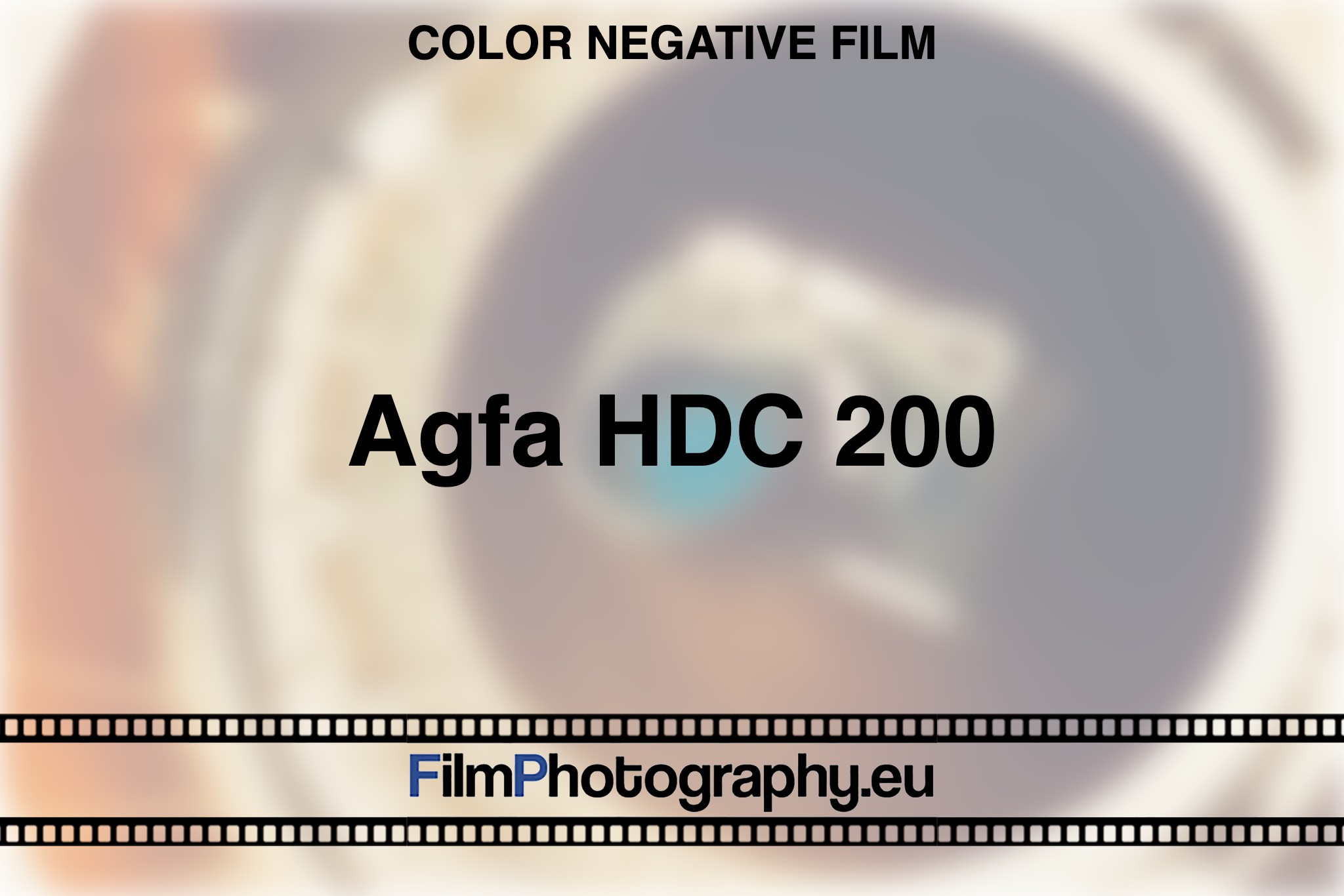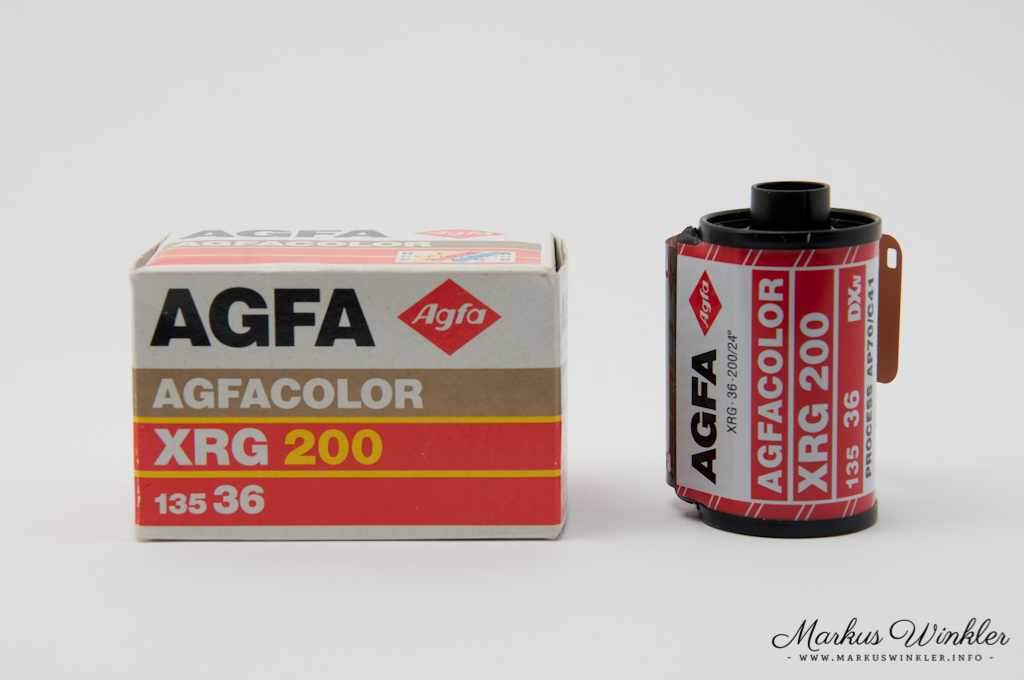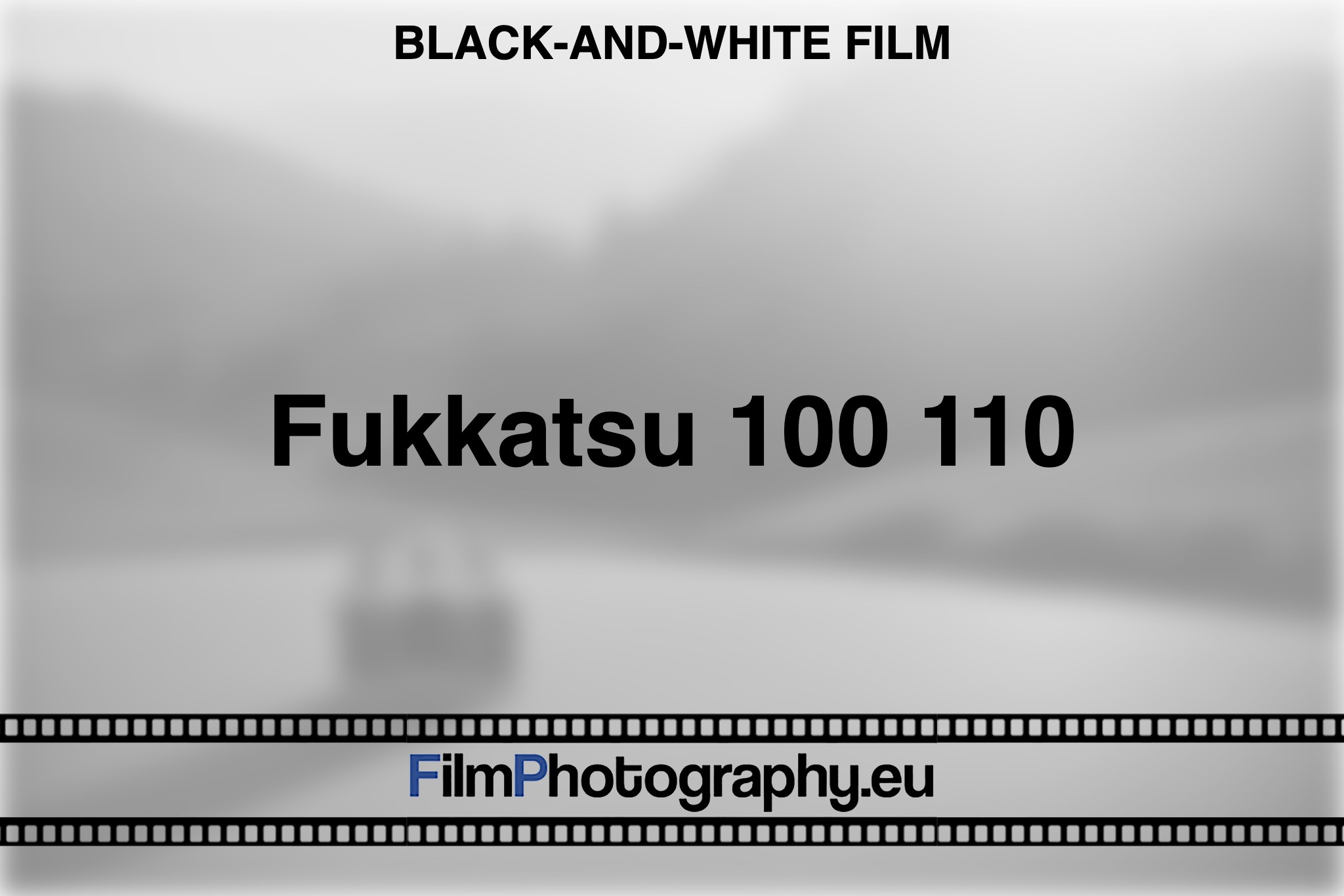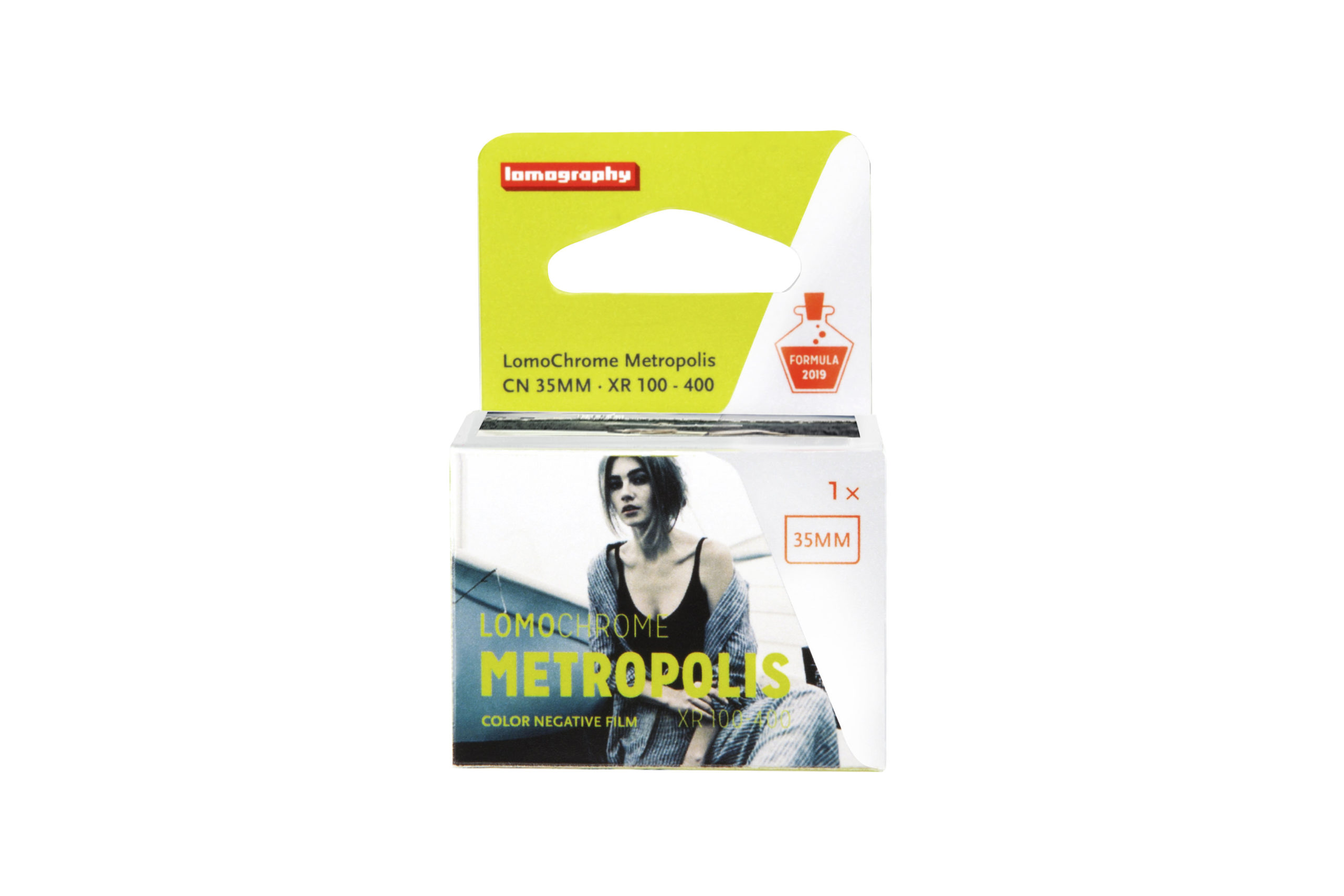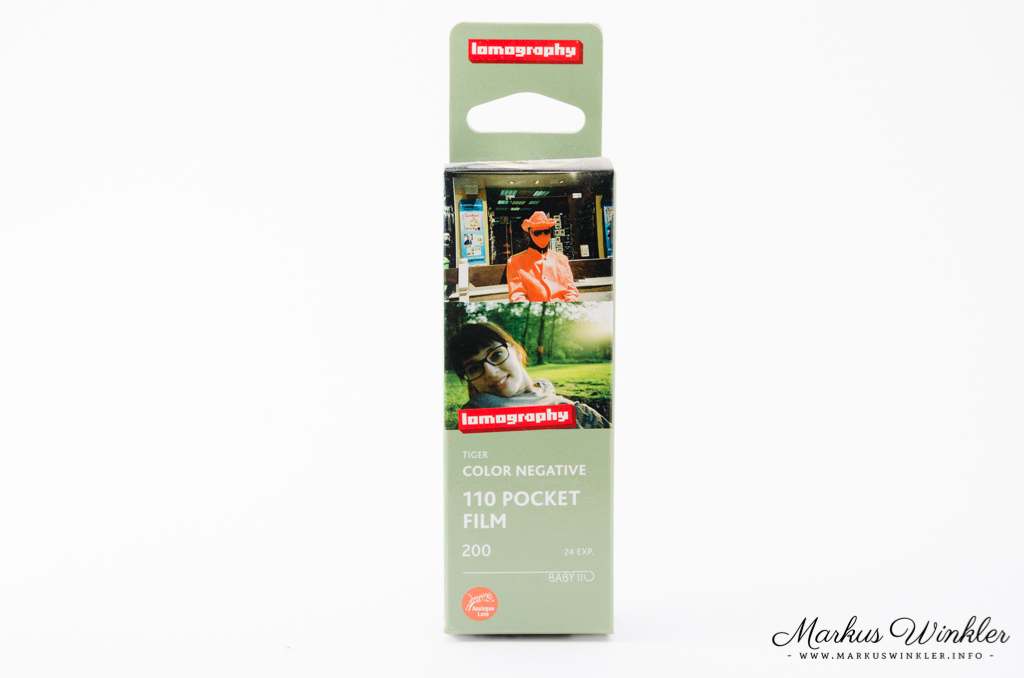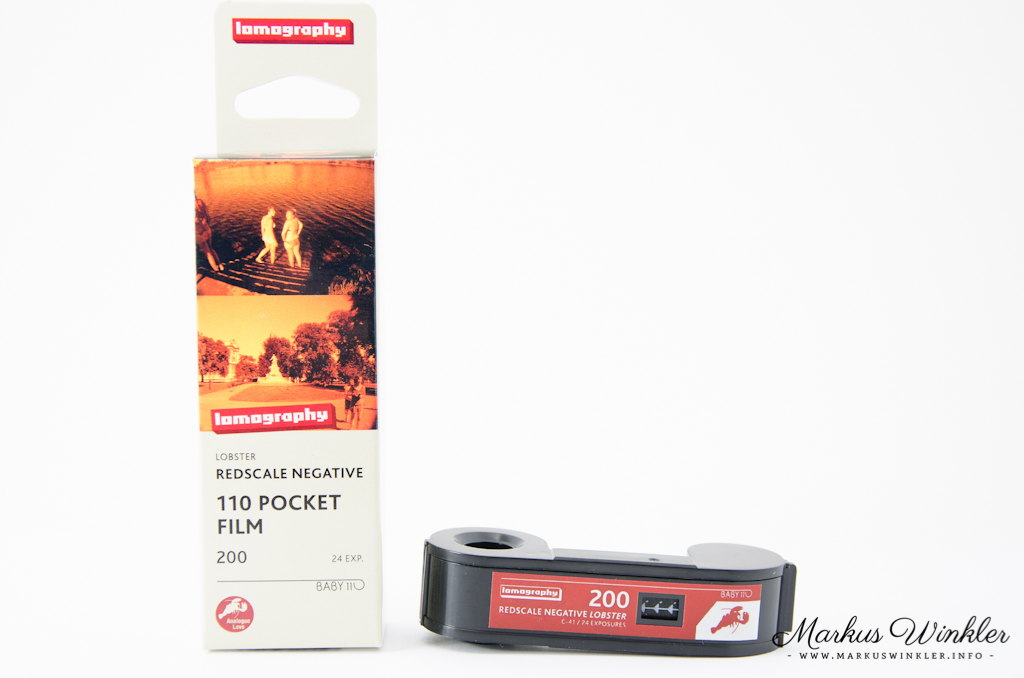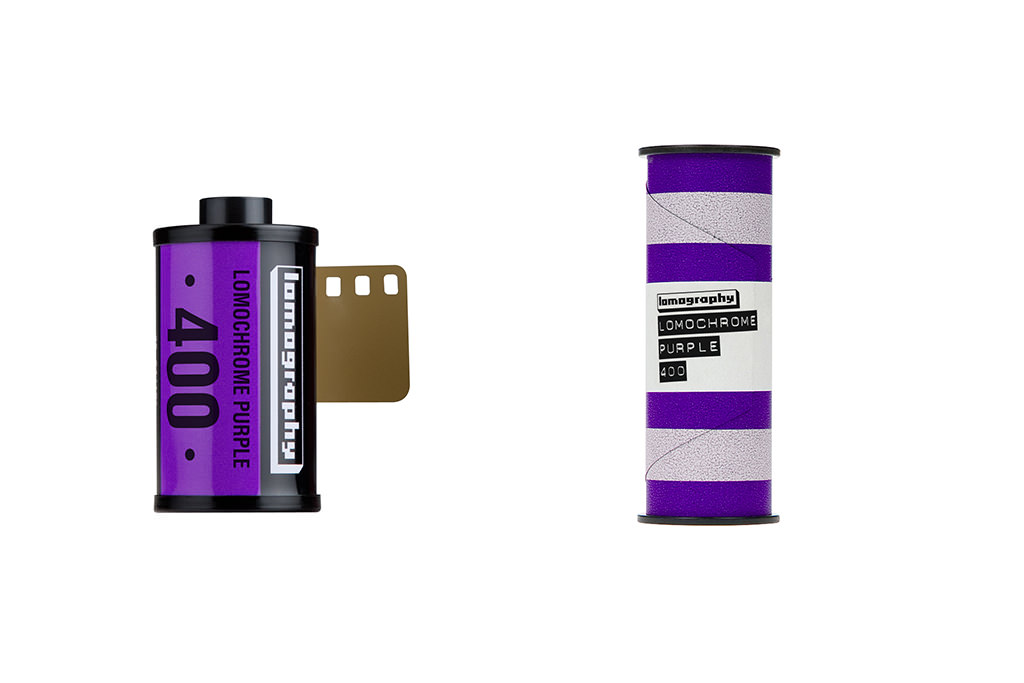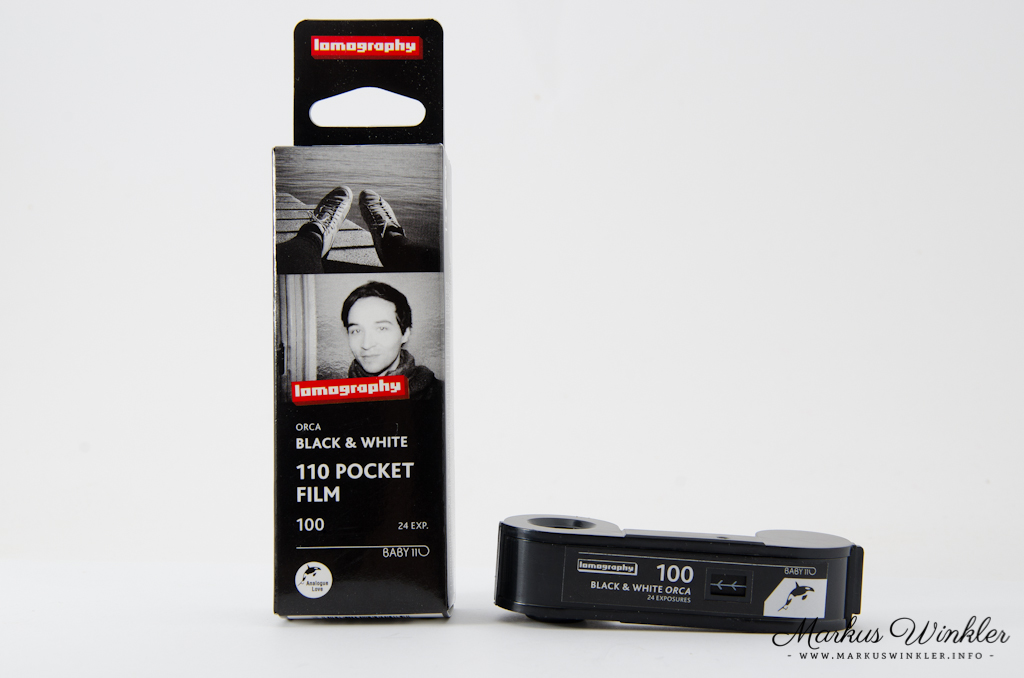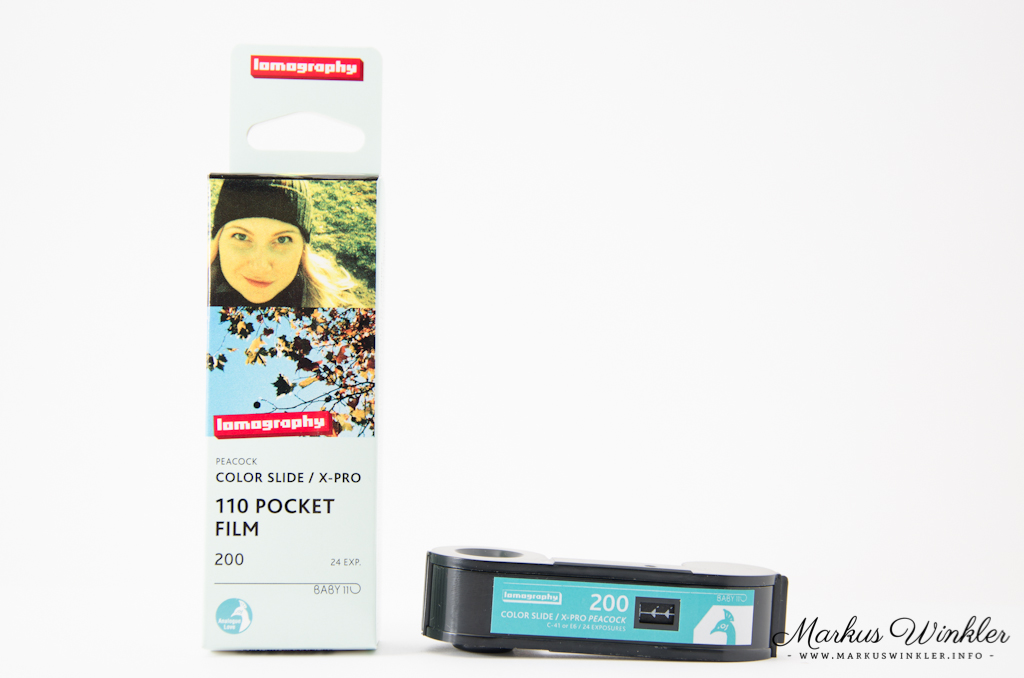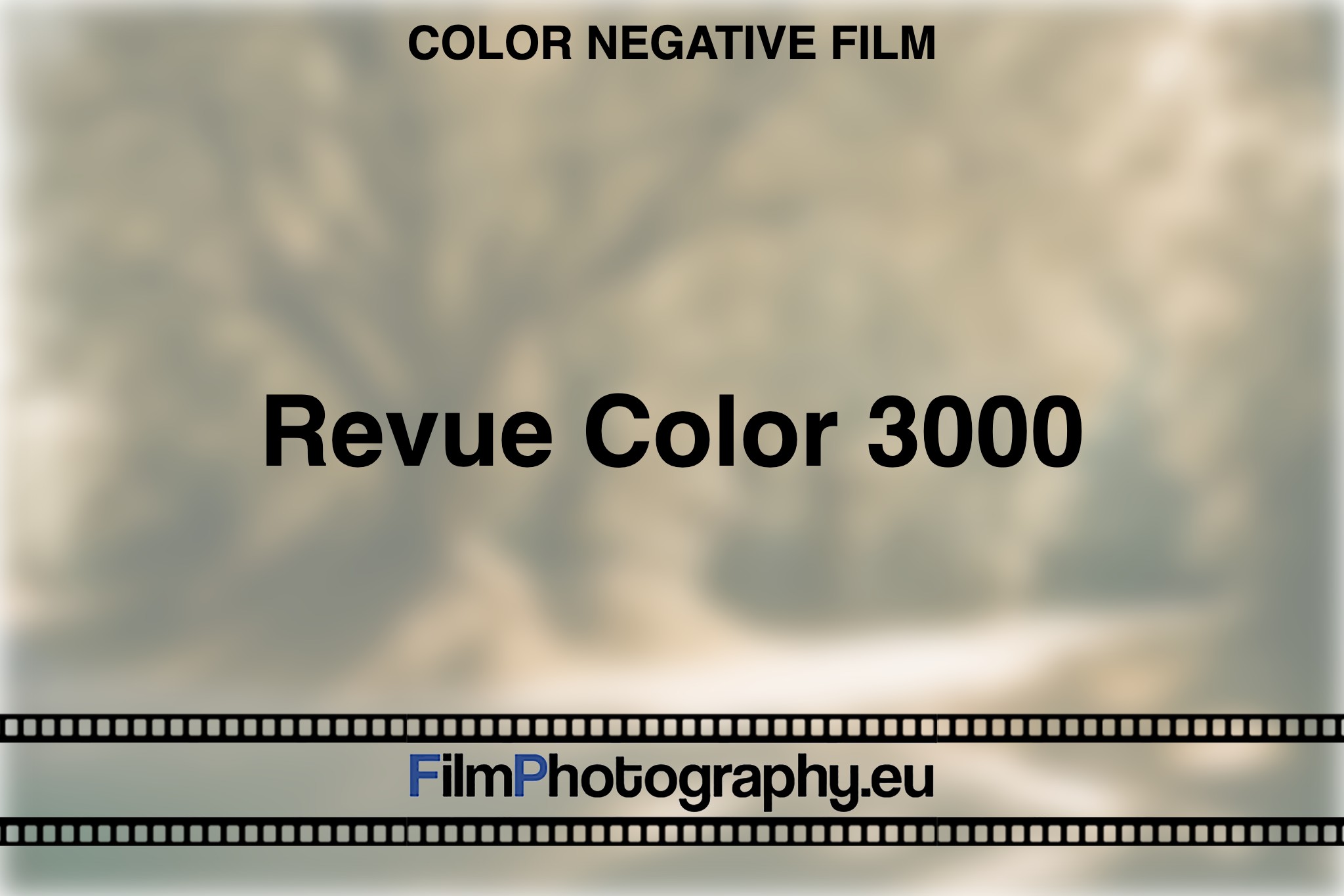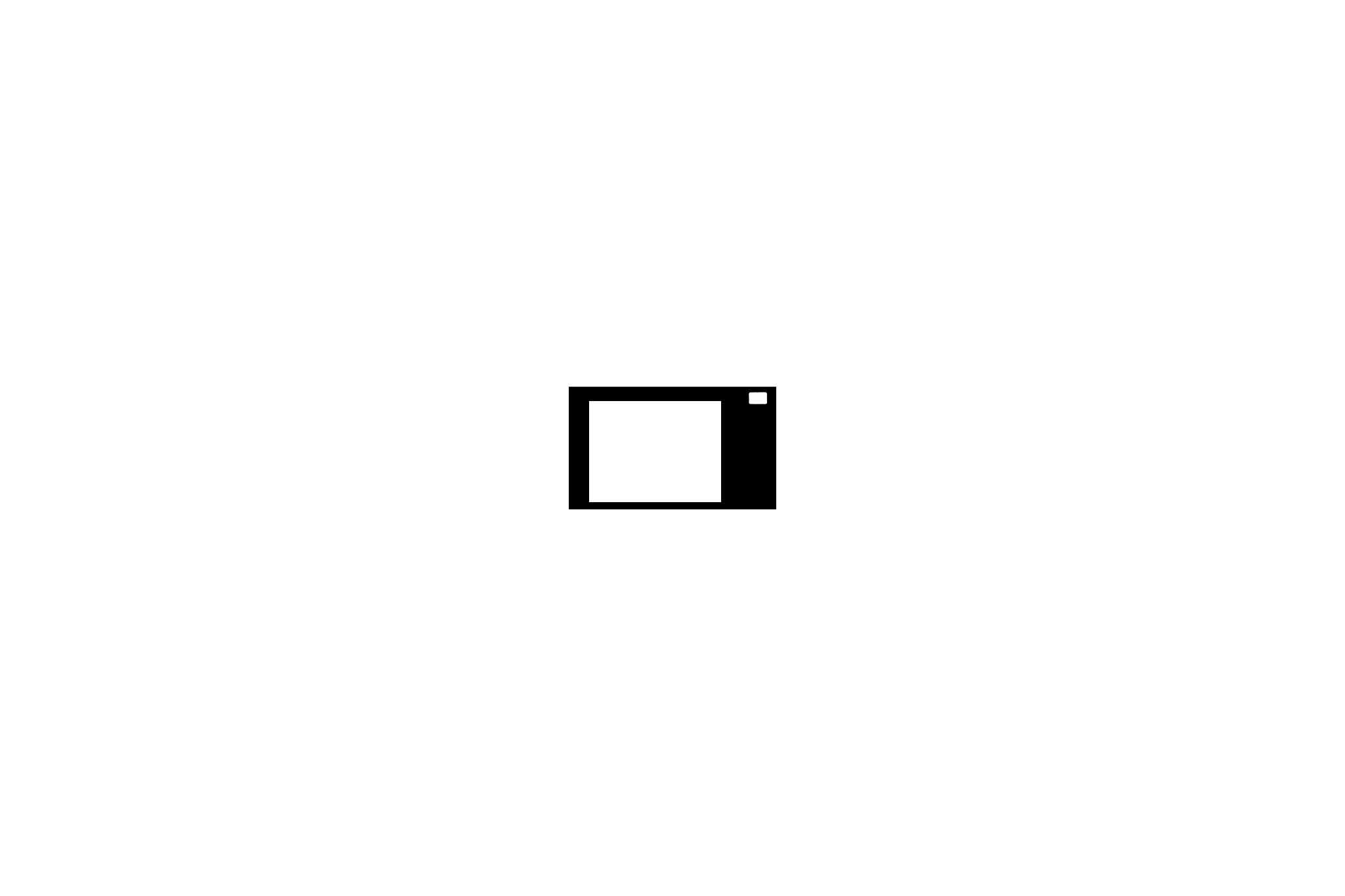110 is a cartridge-based film format used in still photography. Introduced by Kodak in 1972, 110 film was a miniaturized version of the company’s prior 126 film format. Each frame measures 13 mm × 17 mm (0.51 in × 0.67 in), with one registration hole. The film format, which is now considered vintage, was popular due to its user-friendly design – it didn’t require rewinding, was simple to load and unload, and came pre-exposed with frame lines and numbers to facilitate efficient printing.
110 film is fully housed within a plastic cartridge that registers the image as the film advances. Despite competition from disc and APS film formats, 110 negatives were traditionally returned in strips, without the original cartridge. The 110 cartridge was released by Kodak in conjunction with Kodak Pocket Instamatic cameras and films such as Kodachrome-X, Ektachrome-X, Kodacolor II, and Verichrome Pan. The portability of these pocket-sized cameras made them popular and soon displaced subminiature cameras from the market.
Fujifilm ceased production of 110 format film in 2009, but in 2011 Lomography resumed production. They currently offer a range of 110 films including Black and White, Color Negative, and Color Slide options.
The 110 film format has been used in various applications over the years, from model rockets to toy spy cameras. Despite the format being closely associated with cheap, low-cost cameras, high-end manufacturers such as Canon, Minolta, Minox, Pentax, Rollei, Voigtländer, and others have created sophisticated 110 cameras with high-quality lenses and precise exposure systems. However, due to the small negative size of 110 film, enlargements often result in grainy, unsharp prints.
The 110 cartridge was designed with a plastic tab on one end to sense film speed, allowing more sophisticated cameras to switch between high- and low-speed film. But this feature was used by only a few camera models. With the last 110 film produced by Kodak being ISO 400 speed, users often had to manually modify the cartridges to signal the correct speed to the camera.
Although 110 format is commonly associated with print film, Kodak also produced Kodachrome 64 slide film for 110 cartridges until 1982. In 2012, Lomography reintroduced slide film for 110 with their Peacock 200 ASA model. However, adjusting for correct exposure with these films can be challenging due to the lack of a settable ASA dial in some 110 cameras.
